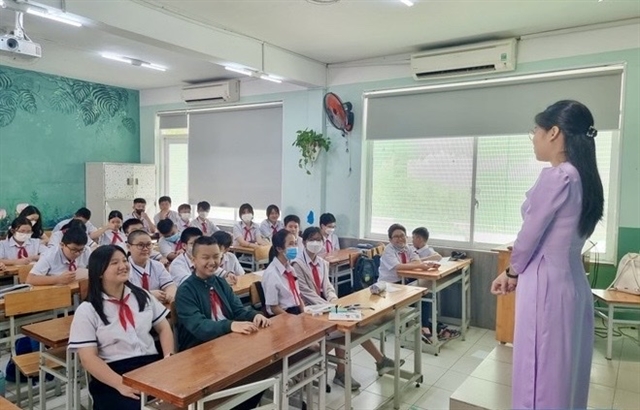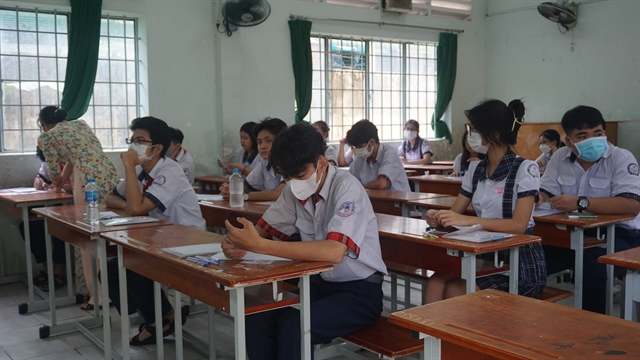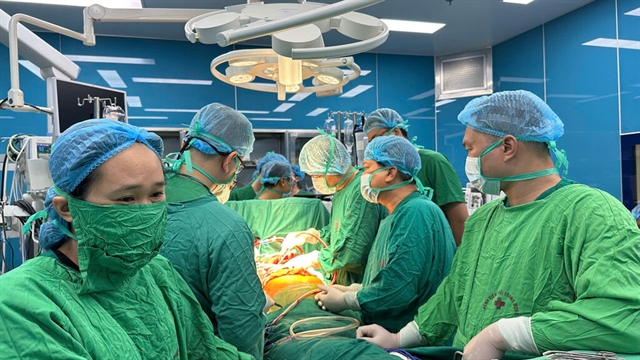 Society
Society

 |
| Students in a class at Lê Quý Đôn Secondary School in HCM City’s Thủ Đức city. — VNA/VNS Photo |
HCM CITY — The HCM City People’s Committee has released a plan to build 4,500 classrooms in response to a shortage of educational facilities.
The work will also celebrate the 50th anniversary of the Liberation of the South and National Reunification (April 30, 2025).
The project targets to have 300 classrooms per ten thousand students to ensure sufficient classroom space.
The city currently has a total of 50,650 classrooms, serving over 1.7 million students and pre-schoolers.
Accordingly, by 2025, the city budget will allocate total proposed capital of more than VNĐ32 trillion (US$1.3 billion) to build 5,560 new classrooms.
Among them, the city has already carried out 117 projects with a total investment of more than VNĐ16.8 trillion ($659 million) after their investment policies were approved.
The medium-term capital allocation in the 2021-2025 period is more than VNĐ12 trillion ($471 million).
Some 78 projects have not been greenlit yet but displayed high feasibility for progress acceleration, with total investment of more than VNĐ6.4 trillion ($251.3 million) and an expected capital need of VNĐ5.5 trillion ($214 million).
About 82 projects have land-related advantages to speed up their progress, with a total investment of nearly VNĐ9 trillion ($351.5 million) and a medium-term capital allocation of VNĐ1.1 trillion ($41.5 million) in the 2021-25 period.
The city plans to call for investment in 110 projects to build 2,638 classrooms with a total of VNĐ24.8 trillion ($974 million) under the public-private partnership form.
Currently, nearly all education projects are in the Build-Operate-Transfer form.
However, the city faces challenges such as land-use planning for PPP projects and a delay in acquiring land, which could increase costs and construction delays for schools and educational facilities.
Another risk is a potential interest rate increase and changes in laws or regulations that could adversely impact the project.
The city needs to address land allocation issues, including relocating and recovering abandoned land, as well as increasing incentives for investing in educational facilities, experts said.
The Government’s policies will encourage PPP investment in education and help to develop a healthy and competitive environment for teaching and learning.
However, education usually requires long-term investment with low profit margins, so businesses may need to offset their operating costs in the first few years to maintain quality, experts said. — VNS




